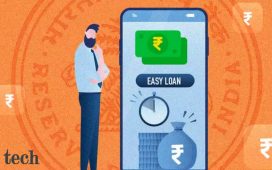Rising interest rates and narrower margins are among the main challenges. Rupifi, ePayLater and others in the online segment are feeling the heat, with eB2B marketplaces scaling down or tightening operations across categories.
With offline channels including general trade and modern trade still occupying more than 90% of the wholesale market, new-generation B2B BNPL players are looking for salvation there. But the traditional side of the industry isn’t easy to navigate.
“Eventually, every financier will have to look at the offline space, considering general trade is still 90% of the B2B market. However, it is a tough market to crack considering it requires high touch with low digital penetration,” said Aurko Bhattacharya, cofounder of BNPL startup, ePayLater.
EPayLater disburses loans worth over Rs 250 crore every month, mostly through offline channels of modern and general trade.
Status Check
Discover the stories of your interest

Online wholesalers like JioMart were earlier offering discounts as deep as 20-25% to partners, trying to outpace competition from traditional distributors. That has fallen to 5-7% this year, insiders said.
Certain eB2B marketplaces have started adding convenience fees, discouraging retailers further.
“All these factors cumulatively have had an impact on margins of BNPL players operating in this space,” the industry executive said.
Brands are offering lower discounts and credit costs are swelling due to the rise in benchmark rates, squeezing BNPL platforms on both fronts. On the other hand, retailers are getting discouraged because of a lack of offers.
“With increase in credit costs, BNPL players had hiked up interest rates to almost 23% to 24% at the peak from 17%-18% last year,” said the founder of a supply chain startup who didn’t want to be named. “These players also want to increase the tenure of the loans, as it increases book sizes (with growth being impacted).”
Unlike supply chain lenders, pay-later startups cater to riskier, lower-ticket size segments, where margins are better but the risk of default is high. These platforms get margins of 0.6-1.5% on an annualised basis compared with 0.2-0.4% at traditional supply chain players.
These margins increase further if digital lending companies have an active NBFC, they lend from.
Defaults have also spiked in certain segments.
“In B2B BNPL, ticket size (risk) is much higher and the segment is not completely digital. Now, when the market has turned, most players don’t have the funds or infrastructure to collect on these loans,” said a second industry executive.
Growth stalling
Rupifi, which works with over 60 online marketplaces, saw growth stall earlier this year towards the second-half of last year and early this year and had to make numerous cost-cutting efforts, including laying off over 10% of staff.
By March, it had to make a move toward offline to de-risk its business. It now sees 90% of loans originating from online marketplaces, with the rest accounted for by offline retailers and their distributors.
“We had to pull out credit lines from states where our partners have stopped servicing retailers,” said Anubhav Jain, cofounder, Rupifi. “We had to renegotiate commercials with marketplace partners, bring down payment gateway costs and undertake a restructuring exercise internally.”
Jain did not comment on the layoffs.
“Things have stabilised over the past six months and we have been able to improve our profitability on contribution margin levels. We are positive about the long-term digitisation of B2B commerce,” he added.
For players like Rupifi that don’t have a lending licence, margins can be further squeezed as partners that foot the loan decide on the pricing. The rise in benchmark rates has made things tougher.
Actyv.ai, which also provides buy-now-pay-later services to distributors of enterprises, had to lay off 60 of its employees last week.
In turn, these marketplaces have started to levy a credit fee to retailers availing loans from BNPL players on the platform, further impacting demand, industry executives said.
Offline no easy play
Now, as B2B marketplaces see a fulcrum shift, business-led BNPL players have to move to a much tougher offline foray.
Bhattacharya of ePayLater said that almost 80% of its book comes from offline channels, including general and modern trade.
Supply chain financing startup Mintifi, which recently closed a $110 million equity round, is actively focusing on its physical distribution network to build deeper connections with offline distributors. It plans to take its total branches from 40 to 100 by the end of FY24.
“While digitisation is important, we think that it is also key to invest in collection mechanisms. You cannot build a business in this segment (BNPL) while working only on distribution,” said Anup Agarwal, cofounder of Mintifi.
Agarwal said that while the focus is to be omnichannel, Mintifi continues to invest 80% of its capital to grow its offline business.
But the lack of digital literacy, investment in distributor relationships and high-touch nature of the offline segment makes it a harder nut to crack for BNPL companies.
“Underwriting for some of the BNPL players were heavily reliant on platform data instead of factoring in different sources such as GST data. Hence now some may have to invest in even underwriting models as well,” said an industry executive.












